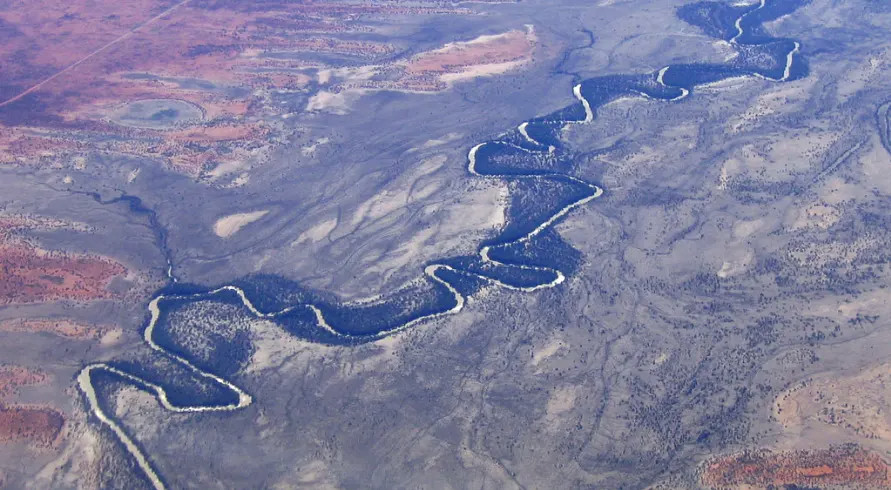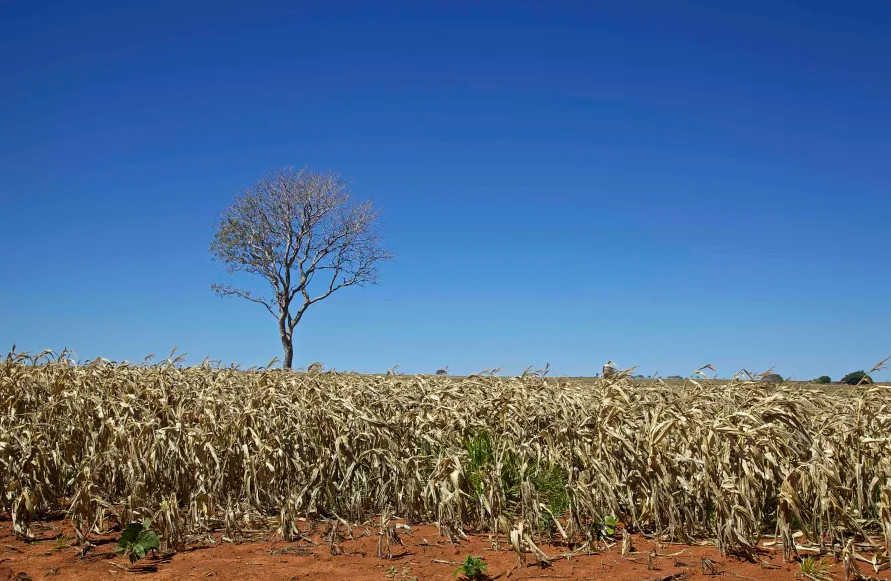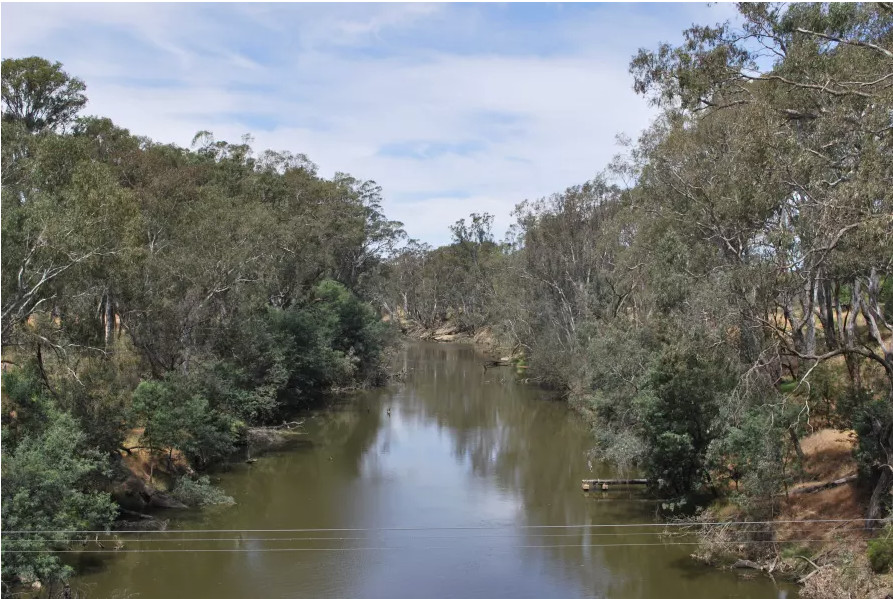
How to undo Australia’s epic water fail

The failure of the Murray Darling Basin Plan is linked to poor political decisions but also to poor market design. The allocation mechanism for our most valuable tradable natural resource is now a gambling pit, so what can be done to fix this mess?
Published 8 September 2020
It has been a bad couple of months in the news.
An onslaught of COVID-19 cases and aged care tragedies in Australia. Monsoonal rains and flooding in South Korea. Ships sailing freely over the North Pole. Oil spilling into a reef off Mauritius. A nuclear-scale explosion in the port of Beirut. And a steaming ooze of Trumpian disasters flowing from America.

Against this background, you can be forgiven for missing the latest news about Australia’s main river system, and the confirmation that decades of water market reviews and reforms have failed.
Damning findings

Nationally, Australian rainfall in 2019 was 40 per cent below average. The Murray-Darling Basin (MDB) river system in particular had its driest year on record. The MDB system extends across four Australian states and one territory.
Winter rains have since brought relief to some parts of the system, but many regions continue to struggle simultaneously with the tragedy of our climate and the ‘tragedy of the commons’ – how best to make use of a resource that is both shared and scarce.
The Bureau of Meteorology reported last month, ‘There has been limited recovery in water storage levels in the Murray-Darling Basin with the rain since January 2020. Water storage in the northern Basin reached the record low of 5.4 per cent of combined capacity in mid-January, 7.5 per cent lower than at any point during the Millennium Drought.’
Another important winter water event was the release of the interim report from the Australian Competition and Consumer Commission’s Murray-Darling water markets inquiry.

On 7 August last year, following a series of controversial reports of water theft, maladministration, profiteering and questionable market conduct, the federal government announced it would direct the ACCC to inquire into markets for tradeable water rights in the MDB.
The 554-page report was released on 30 July 2020, and is a damning doorstopper. It details gaping holes and appalling failures in our principal market for irrigation water.

Environment
Water management? Yes, it’s personal
Here’s the ACCC’s own summary of the problems in the market for our most important tradable natural resource:
• Water market intermediaries such as brokers and water-exchange platforms operate in a mostly unregulated environment, allowing conflicts of interest to arise, and opportunities for transactions to be reported improperly
• There are scant rules to guard against the emergence of conduct aimed at manipulating market prices, and no particular body to monitor the trading activities of market participants
• There are information failures which limit the openness of markets and favour better-resourced and professional traders who can take advantage of opportunities such as inter-valley trade/transfer openings
• Differences in trade processes and water registries between the Basin States prevent participants from gaining a full, timely and accurate picture of water trade, including price, supply and demand
• Important information, such as allocation policies and river operations policy, which can significantly impact water pricing, are inadequately communicated to the irrigators and traders who rely on these to make business decisions

• There is a disconnect between the rules of the trading system and the physical characteristics of the river system. For example, on-river delivery capacity scarcity, conveyance losses and adverse environmental impacts are not considered in the processing of trades that change the location of water use, except through some blunt and imprecise rules, such as limits on inter-valley trade/transfers
• Overarching governance arrangements, which result in regulatory fragmentation and overlapping of roles of different governing bodies, contribute to many of these problems, or prevent them from being addressed in an effective and timely way.

Sciences & Technology
Repairing the Murray-Darling Basin
Let’s pause to digest a few of the ACCC’s key words and findings.
A mismatch between market and physical system. A gaggle of regulators with fragmented and overlapping roles. Untimely, inaccurate and inadequate information. Improper reporting. Conflicts of interest. Professional traders taking advantage. Imagine what would happen if these criticisms were levelled at the stock market, or the housing market.
The findings are extensive in their scope. For example, the problems with market information extend to prices, supply, demand and market participants – the principal elements of any market.
The picture painted by the ACCC brings to mind the wild-west electricity markets of America in the early 2000s, in which sophisticated traders made super profits betting on Californian blackouts. Now, the traders are betting on droughts.
The ACCC is seeking feedback on its interim report, and it has appealed in particular for advice on how we can get out of this mess. The usual safe options are on the table, but the ACCC has acknowledged that the usual boilerplate responses may not be enough to unwind our water tangle. We have a few ideas of our own about how to do just that.

What went wrong?
The original National Water Initiative focused on making the best use of our water resources; it did not envisage market behaviours such as speculative and tactical trading in water with a view to making profits in the water market itself, rather than profiting from farming.
But, over time, the water market designers have made fateful decisions that allowed perverse conduct that has affected investment in farms and water.

Environment
The global problem of thirsty cities
The first mistake: within the irrigation water cap, the irrigation water rights were not defined as ‘water in use’, and specifically not as water in its irrigation and farming uses.
The second mistake: in the interests of greater market ‘liquidity’, policymakers have allowed external, non-user parties (those with no intention of using the water themselves for farming and irrigation) to buy and trade water rights.
These two mistakes decoupled the market value of water from its irrigation use value. Australian water rights have become a financial investment product. As a result, there has been an influx of capital from non-users, for purposes such as speculation and branded water ‘investing’.
This has led to higher water prices overall, and a wider spread between the prices farmers receive when they sell water rights, and the prices they pay when they buy water rights.
Why does a high water price matter? Surely a higher price encourages more careful use? Yes, but it is important to remember that the trading is of water within the capped amount already allocated for irrigation, as opposed to the separate flows reserved for the environment.

From a public policy perspective, the purpose of water trading within the cap is to direct the water to where it can best be used. But pushing up the price of water beyond its scarcity value (and widening the bid-ask spread in water trades) can have perverse and unforeseen impacts.
One potential consequence is a distorted incentive for existing farmers to sell rights and close farms. (Excessive prices can also encourage water theft, non-compliance and missing water.)

Another is a shift of farming activity towards investors and investments that can tolerate very low returns. Artificially high water prices can favour non-traditional products and production – such as the almond groves on the Murray River below the Barmah Choke – for whom a marginal unit of delivered water has the highest value.
These impacts would cause a flight of water, capital and economic activity from the traditional food-bowl regions such as north-central and north-eastern Victoria and southern NSW. That in turn would weaken Australia’s food supply. It appears a scenario not unlike that is already playing out – at a time when the local and international opportunities for Australian food are greatest.
A way forward
‘Water rights for irrigation’ should be defined in precisely those terms, as water for irrigation. (Other categories, too, should be specified, including Indigenous water rights.) The price of water for irrigation should reflect the true, value-in-use price.
While the irrigation water market should be for irrigation water users, some outside participation in the market has occurred for legitimate purposes such as risk management.

In the future, those legitimate purposes could be accommodated without allowing outside investors to own and trade actual water rights.
For example, synthetic securities and derivatives – linked to the true market value of water – could expand the availability of water-value-linked tradable assets without artificially bidding up the price of water rights.

Sciences & Technology
Avoiding Day Zero in Australia
One example of legitimate risk management that could occur in parallel to but outside the actual water market is that farmers who are exposed to the risk of rising water prices could offset or ‘hedge’ this risk by entering financial contracts or options that pay off when water prices do in fact rise.
Counterparties may enter those contracts to seek exposure to changes in Australian irrigation water prices as a proxy of the impact of climate change.
Here, in summary, is a way forward for water markets reform:
• Redefine water rights as entitlements for water-in-use, in order to return to the concept of the water market as an efficient water allocation mechanism, not a financialised market
• Restrict further external and speculative capital inflows, and establish stronger rules about who can participate in the market
• Make water trading much more transparent and reliable
• Consider phasing out the casino element of water trading, such as by requiring non-users to sell down their holdings over time, or to substitute them for new, alternative assets that track the true water price without influencing it

• Support expanded use of such new securities as a legitimate way to manage risk, such as by seeking or hedging exposure to water prices or environmental risks
• Increase investment in water infrastructure for our foodbowls, to lift the value-in-use of water in those areas and to cement Australia’s place in global food supply chains.
These actions would not mean less water for the environment. All the changes would take place within the framework of capped diversion. Nor would they mean moving away from allocative efficiency or a market-based approach.
Paying too high a price for ‘liquidity’ in the water market
It is time to acknowledge an unhappy truth. The failure of the Murray Darling Basin Plan has been a failure of politics but also, in large part, a failure of market design. Bad policy has turned the allocation of our most valuable resource into a gambling pit.
The ACCC’s interim report should be a turning point in Australian water policy. The report confirmed that our most important natural resource market has been botched. If not for COVID, this would be receiving much more attention. It should be a national debate, and possibly a national scandal.
Banner: Getty Images

